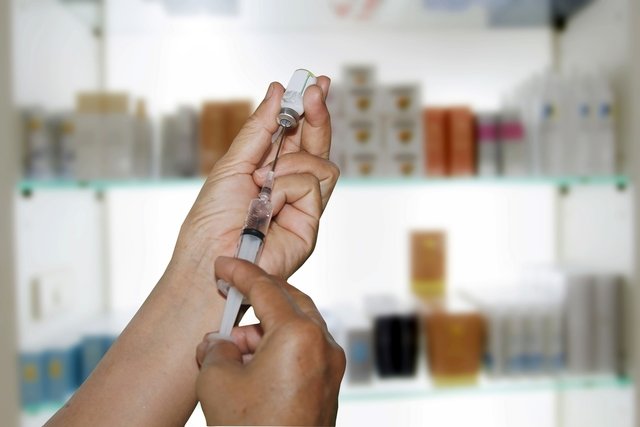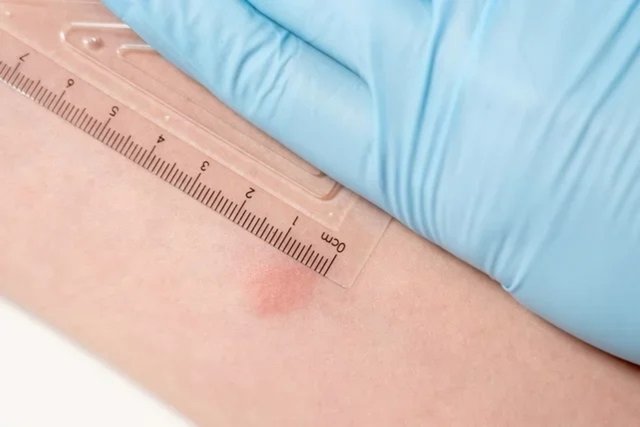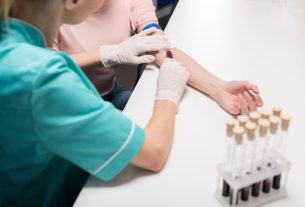The PPD is the standard screening test to identify infection with the bacteria Mycobacterium tuberculosis and thus assist in the diagnosis of tuberculosis. Normally, the test is carried out on people who have been in direct contact with patients infected by the bacteria, even if they do not show symptoms of the disease. Find out what the symptoms of tuberculosis are.
The PPD test, also known as tuberculin skin test or Mantoux reaction, is carried out in clinical analysis laboratories through a small injection containing proteins derived from bacteria under the skin, and should be evaluated and interpreted preferably by a pulmonologist so that the test can be carried out. correct diagnosis.
When the PPD is positive there is a high chance of being contaminated by the bacteria. However, the PPD test alone is not sufficient to confirm or exclude the diagnosis of tuberculosis. Therefore, the doctor must order other tests, such as a chest x-ray or examination of bacteria in sputum, for example.

How the PPD exam is done
The PPD exam is carried out in a clinical analysis laboratory through the injection of a purified protein derivative (PPD), that is, purified proteins that are present on the surface of the tuberculosis bacteria. The proteins are purified so that the disease does not develop in people who do not have the bacteria, however the proteins react in people who are infected or have been vaccinated.
The substance is applied to the left forearm and the result must be interpreted 72 hours after application, which is the time it normally takes for the reaction to occur. Therefore, 3 days after applying the tuberculosis protein, it is recommended to return to the doctor to find out the results of the test, which must also take into account the symptoms presented by the person.
PPD exam preparation
To take the PPD exam, it is not necessary to fast or take other special care, it is only recommended to inform your doctor if you are using any type of medication.
This test can be carried out on children, pregnant women or people with a compromised immune system, however, it should not be carried out on people who have the possibility of severe allergic reactions, such as necrosis, ulceration or severe anaphylactic shock.
PPD Exam Results

The results of the PPD test depend on the size of the skin reaction and, therefore, can be:
- Up to 5mm: in general, it is considered a negative result and, therefore, not indicating infection with tuberculosis bacteria, except in specific situations;
- 5 mm a 9 mm: it is a positive resulto, indicating infection with tuberculosis bacteria, especially in children under 10 years old who have not been vaccinated or vaccinated with BCG for more than 2 years, people with HIV/AIDS, with weakened immunity or who have tuberculosis scars on chest x-rays;
- 10 mm or more: positive resultindicating infection with tuberculosis bacteria.
In addition to the PPD exam, to confirm or rule out the diagnosis of tuberculosis, the doctor may recommend additional tests, such as chest x-rays, immunological tests and sputum smear microscopy, which is a laboratory test in which the patient’s sample, usually sputum, is investigated. disease-causing bacilli.
Do you have questions about your exam results?
In some situations, the presence of a skin reaction larger than 5 mm does not mean that the person is infected with the mycobacteria that causes tuberculosis. For example, people who have already been vaccinated against tuberculosis (BCG vaccine) or who have an infection with other types of mycobacteria may experience a skin reaction when the test is performed, which is called a false-positive result.
False-negative result
The false-negative result is when the person is infected with the bacteria, but does not form a reaction in the PPD, which can occur in cases of people with weakened immunity, such as those with AIDS, cancer or those using immunosuppressant medications, in addition to malnutrition, age over 65, dehydration or a serious infection.
Bibliography
- CDC. Tuberculin Skin Testing Fact Sheet. Available at: <https://www.cdc.gov/tb/publications/factsheets/testing/skintesting.htm>. Accessed on 14 Dec 2022
- CDC. Testing for TB Infection. Available at: <https://www.cdc.gov/tb/topic/testing/tbtesttypes.htm>. Accessed on 14 Dec 2022
- State Department of Health of São Paulo. Tuberculin test. Available at: <http://www.saude.sp.gov.br/resources/cve-centro-de-vigilancia-epidemiologica/areas-de-vigilancia/tuberculose/aula05dots_prova_tuberculinica.pdf>.
- MINISTRY OF HEALTH. Techniques for applying and reading the tuberculin skin test. 2014. Available at: <http://bvsms.saude.gov.br/bvs/publicacoes/tecnicas_aplicacao_leitura_prova_tuberculinica.pdf>. Accessed on April 16, 2019

Sign up for our newsletter and stay up to date with exclusive news
that can transform your routine!
Warning: Undefined array key "title" in /home/storelat/public_html/wp-content/plugins/link-whisper-premium/templates/frontend/related-posts.php on line 12
Warning: Undefined array key "title_tag" in /home/storelat/public_html/wp-content/plugins/link-whisper-premium/templates/frontend/related-posts.php on line 13



